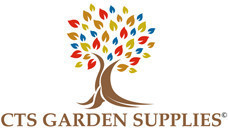What is Compost?
Why do I need to use compost?
Not every garden is the same, some soils are good for growing plants, some aren't. Even in the same garden the quality of the soil may differ and can range from unsuitable to providing the right conditions. This is why gardeners choose a compost to ensure their plants have the right nutrients to grow.What is peat based compost?
A peat based compost contains a mixture of peat and other ingredients such as fertiliser, sand, grit, wettings agents and lime. The exact recipe depending on its intended use.What is peat reduced or peat free compost?
Modern compost recipes tend to favour reducing or replacing the peat completely with different agents such as coir or wood bark which are more environmentally friendly.What is a loam based compost?
A compost that's classed as loam based uses a mixture of sand, silt and clay soil. This base is often mixed with peat, sand or grit and fertiliser. John Innes Composts are typically loam based.What is Forest Gold?
It is a natural, fibrous timber material produced from wood chips. The wood chips are heated up then spun into fibres to ensure it's free from weeds, disease and other harmful organisms. It improves air to water ratio and drainage. Improves water distribution. Aids root growth.What is green waste peat alternative?
This is made from composted green waste, largely from municipal garden waste and can include food waste, and animal by-products. Green waste can include fruit and vegetable waste, grass clippings, hedge trimmings, branches, plants, flowers, leaves.What is Westlands BIO3 peat alternative?
This is a peat free technology that includes Westlands West+ wood fibre and coir+. It offers good water management.What is coir peat alternative?
coir is usually a coconut fibre. It has good water holding capacity but doesn't retain nutrients very well.Difference between professional and retail compost?
Retail compost quality can vary, even over a few months whereas professional brands maintain the same composition from year to year. Professional growers need to know that the nutrients and makeup of the compost is consistent and doesn't change as they buy for the year ahead. As compost is derived from decomposed organic and animal products, each batch can be different, which doesn't suit the professional grower. Peat reduced retail products may contain green waste whereas these won't be found in professional products.Are all composts the same?
No, each compost will have a specific composition suitable to a particular range of plants. Types you may have heard of include multi purpose/all purpose, ericaceous, potting & bedding and grow bags. Each compost type will have a unique recipe so make sure you select the right one for your plants to ensure optimum growth.What is multi purpose compost?
Multi Purpose compost/all purpose compost has traditionally been a blend of peat and other materials such as green compost (made by breaking down organics such as plants, leaves, twigs etc), bark and wood fibres as well as fertiliser and lime. The aim is to create a balanced pH and nutrient level that's suitable for a wide range of plants.It is often referred to as growing media as it contains balanced nutrients and beneficial organisms, along with fertiliser that help the plants grow. It can be used around the garden in beds, borders, pots, containers and hanging baskets.





